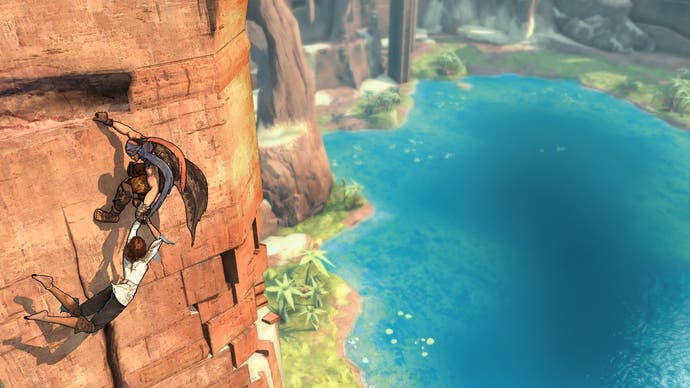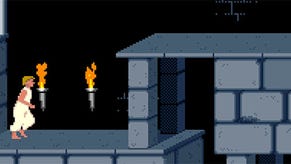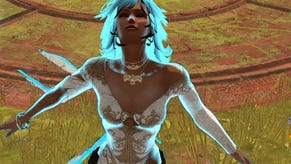Prince of Persia
Take it easy.
Prince of Persia hasn't always spun a good yarn, but it's often overcome that with exotic locations and even more exotic acrobatics, and for the first few hours the new-look Prince threatens to do likewise. Having stumbled upon a Princess in peril while out hunting for his wayward donkey, the Americanised Prince falls into a divine battle between the forces of good and evil, and proceeds to wisecrack and Brendan-Fraser his way through an occasionally delicate story of restoring life to a corrupted fantasy world of epic palaces and Skies-of-Arcadian technology.
His antics are almost as destructive to the ambiance as the formerly caged God of Darkness, Ahriman, is to the environment, and his jarring dialogue and delivery persistently overshadow wistful, majestic graphics and his more serious and likeable new female counterpart, who rarely gets a chance to project the character her few monologues attempt to establish. With an oddly small, immobile head atop bulging musculature, the Prince looks awkward in his own skin, and he certainly feels out of place in his own game.
But while others have backed away from gaming's most empowering genre, Ubisoft seemingly follows up last year's dauntless Assassin's Creed by cutting away as much frustration as possible, delivering the most extraordinary and death-defying platform move-set ever, and then exaggerating it deliciously in every step, prance and bound. Leaping into space, the Prince is able to claw himself an extra six feet up any given cliffside he strikes to reach an edge. He can chain alternate wall-runs, flip between trapezes and beams, slide down dusty slopes, grind down walls with his gauntlet, clamber across patches of greenery and grab at poles.
Carefully placed hooks also allow him to traverse sequential wall-runs on the same surface, hook himself around corners up, down and sideways, and even run briefly along the ceiling from the tops of pillars. The game's camera - so often the bane of third-person platform games - does such a quietly excellent job throughout that we almost forgot to mention it. There's almost no break in pace or control for great stretches, even minutes after you take the reins, and the Prince's movement is satisfyingly deft compared to the likes of Nathan Drake and Lara Croft.

With Princess Elika, Ubisoft has also found a much-needed replacement for the Sands of Time. Rather than reversing mistakes several times and then being booted back to a checkpoint, every mistimed leap into the abyss and ill-judged release is rescued by the ethereal hand of our newfound Princess, who places the Prince back on the last solid platform he reached in a split second. Elika also acts as a double-jump; when the Prince comes up short, the screen bleeds colour and a stab of the Elika button gives you a timely boost to cover the remaining distance. Fail and she saves you anyway.
It's actually impossible to die. If the Prince succumbs to an enemy in battle, Elika restores him at the cost of a bit more health on the enemy's bar, and in platform sections the most we lost was around 20 seconds. This can be frustrating if it happens a few times in a row, as it does when the tendrils of corruption arrive later and timing movements becomes more of a factor, but it's trifling next to the eons-old anguish of Tomb Raider, Mario, Sonic and, of course, past Princes of Persia. For some the absence of death will be a step too far, but we agree with Ubisoft's designers; having to try again is punishment enough, and the lighter the punishment the better.
After three POP games of increasingly complex (and for many increasingly maddening) combat, Ubisoft also seeks to make amends in battle. Each fight involves chaining together sword, gauntlet, acrobatic and magical attacks, each assigned to a face button, and blocking with a shoulder. There are quick-time button procedures to follow during clinches and after failing to block a couple of successive attacks, but the emphasis is on accessibility, if the emphasis is on combat at all. Enemy encounters outside boss fights are infrequent and even avoidable in many cases.












